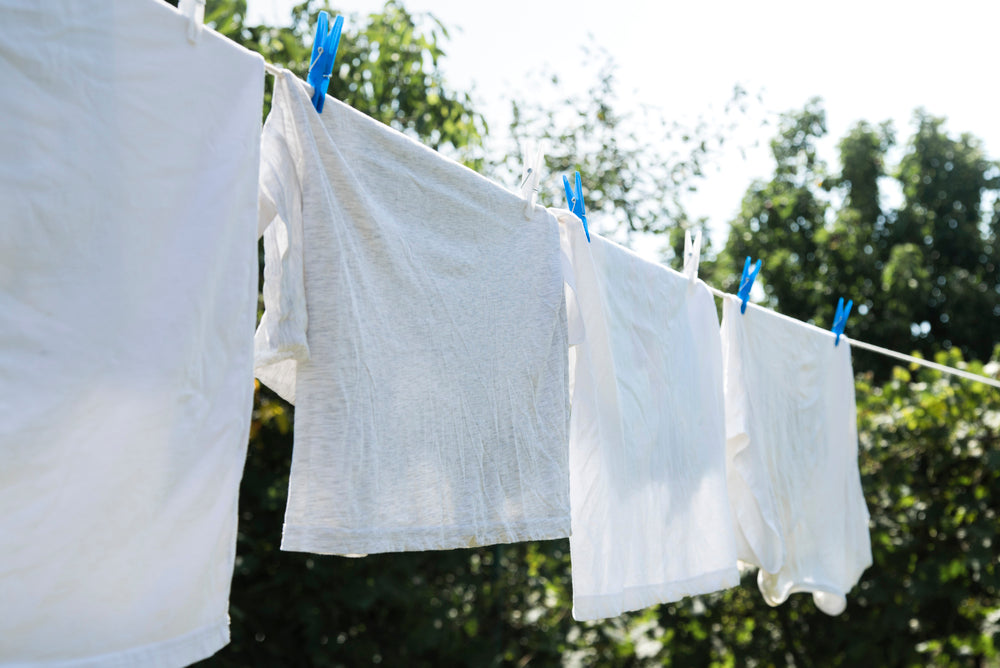Static cling can be an annoying and frustrating issue when it comes to doing laundry. While dryer sheets have been a popular solution for eliminating static from clothes, they often come with their fair share of disadvantages. Fortunately, there are alternative methods to achieve static-free laundry without relying on dryer sheets. In this blog, we'll explore some effective and eco-friendly ways to remove static from clothes without dryer sheets.
Methods to Remove Static from Clothes without Dryer Sheets
Static cling can be a frustrating issue when doing laundry, but there are several effective methods to remove static from clothes without dryer sheets. Here are some practical ways to eliminate static from your clothes:
Vinegar to the Rescue:
White vinegar is a versatile household item that can work wonders in the laundry room. To eliminate static, add half a cup of white vinegar to your washer's rinse cycle. The acetic acid in the vinegar helps to break down any detergent residues that might contribute to static cling. Additionally, vinegar softens fabrics naturally, leaving your clothes feeling fresh and static-free.
Use Wool Dryer Balls:
Wool dryer balls are an excellent alternative to traditional dryer sheets. These natural, reusable balls reduce static cling by creating space between your clothes during the drying process. As a bonus, they also speed up drying time and help to fluff and soften your laundry. Simply toss a few dryer balls into the dryer with your clothes, and say goodbye to static!
Humidity is Key:
Static electricity thrives in dry environments, so increasing the humidity in your laundry area can work wonders. Invest in a humidifier or place a water-filled bowl near your drying rack or clothesline. The added moisture in the air will help to prevent static buildup on your clothes.
Hang Dry Wisely:
When hang-drying your clothes, keep a few tips in mind to dry clothes without dryer sheet. First, shake out each garment before hanging it up. This helps to release any static that may have built up while in the washer. Secondly, use wooden clothespins instead of metal ones, as metal can contribute to static. Finally, avoid overcrowding the drying rack or clothesline, as clothes that are too close together can rub against each other and create static.
Aluminum Foil Trick:
A simple and effective method to remove static from clothes is using aluminum foil. Create a ball of aluminum foil and toss it into the dryer with your laundry. As the dryer spins, the foil will discharge any static buildup, leaving your clothes static-free.
Natural Fabric Softeners:
Opt for natural fabric softeners, such as homemade concoctions using baking soda, essential oils, or even a few drops of coconut oil. Adding these natural softeners to your laundry during the rinse cycle can help reduce static and leave your clothes feeling soft and fresh.
Adjust Laundry Detergent Usage:
Sometimes, excessive use of laundry detergent can contribute to static cling. Follow the recommended dosage of detergent or even slightly reduce the amount you use. Over time, this small change can help reduce the static buildup in your clothes.
Metal Safety Pin Trick:
Attach a metal safety pin to a seam or hem of your clothes while they're in the dryer. The metal will discharge any static as it moves around in the dryer, leaving your clothes static-free.
Conclusion:
In Order to remove static from clothes without dryer sheets is not only possible but also a greener and healthier choice for your laundry routine. Embrace these simple and effective alternatives to dryer sheets, such as using vinegar, wool dryer balls, or adjusting laundry detergent usage. Additionally, incorporating humidity, the aluminum foil trick and mindful hang-drying practices can further minimize static cling. By making these eco-friendly changes, you can enjoy static-free and fresh-smelling laundry without compromising on the health of your clothes or the environment.

